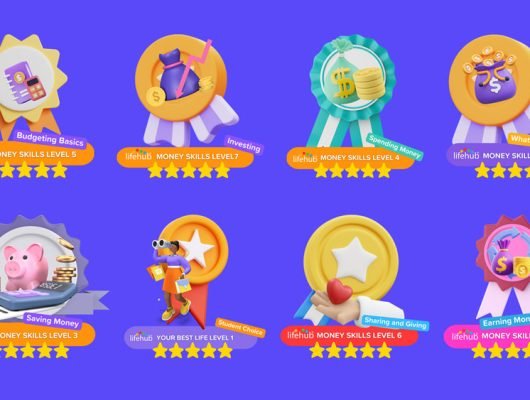In today’s world, the connection between financial stability and community safety is becoming increasingly clear. As parents, educators, and community leaders, we often focus on direct crime prevention methods. However, one powerful tool in reducing crime rates is often overlooked: financial literacy education. Programs like Life Hub are at the forefront of this innovative approach to creating safer, more prosperous communities.
The Link Between Financial Instability and Crime
Before we dive into solutions, it’s crucial to understand the problem. Financial instability often leads to stress and anxiety, which can, in turn, lead to negative outcomes including criminal activity. According to FINRA, 60% of American adults feel anxious about their personal finances, and 50% feel stressed when discussing them. This financial stress is significantly linked to low levels of financial literacy.
How Financial Literacy Makes a Difference
1. Reduced Desperation: Preventing Crimes of Necessity
When individuals understand how to manage their money effectively, they’re less likely to find themselves in desperate financial situations. Life Hub’s comprehensive financial education teaches young people budgeting, saving, and long-term financial planning. These skills act as a safety net, potentially reducing the likelihood of turning to crime as a last resort.
2. Better Opportunities: Opening Doors to Legitimate Income
Financial literacy doesn’t just teach people how to manage money – it opens their eyes to legitimate earning opportunities. Research from Cambridge University Press & Assessment and Emerald Insight indicates that early financial education makes individuals more likely to create successful careers and less likely to be unemployed. Life Hub’s unique edu-jobs program allows young people to earn real money while learning, providing a taste of honest work and its rewards.
3. Community Investment: Financially Literate Individuals Contributing to Local Economies
When people are financially literate, they’re more likely to make informed decisions about spending and investing in their local communities. A study by MDPI found that high school students who took financial education courses are significantly more likely to have lower credit card debt and higher savings rates in adulthood. This increased financial stability can lead to more local investment and a stronger overall economy.
4. Youth Engagement: Keeping Kids off the Streets
Programs like Life Hub do more than teach financial skills – they provide structured, purposeful activities for young people. Usher & Kober’s 2012 study explored various U.S. programs where monetary rewards were used to improve student performance and attendance, indicating positive short-term outcomes. By engaging youth in learning about money management and providing opportunities to earn through edu-jobs, we’re offering a positive alternative to less constructive pastimes that could lead to trouble.
5. Long-term Impact: Generational Effects of Financial Education on Crime Rates
Perhaps most importantly, financial literacy has a ripple effect across generations. The Early Intervention Foundation study demonstrates that financial literacy education helps couples reduce financial conflicts, leading to stronger and more harmonious relationships. When young people learn these skills, they’re likely to pass them on to their own children in the future, creating a cycle of financial stability that can significantly improve community outcomes over time.
Life Hub’s Role: Empowering Youth, Strengthening Communities
Life Hub’s innovative approach combines financial education with real-world earning experiences. Through our edu-jobs program, young people not only learn about money management but also experience the satisfaction of earning their own money. This aligns with findings from Bowen & Kensinger’s 2017 study, which revealed that participants compensated with cash performed better on memory tasks compared to those given course credit.
Moreover, the Life Hub Visa rewards card gives kids a safe, controlled environment to practice managing real money. This hands-on experience is invaluable in preparing them for financial responsibility in adulthood, potentially reducing future financial stress and its associated negative outcomes.
Conclusion: Investing in Financial Literacy for Safer Communities
The evidence is clear: financial literacy education is a powerful tool in promoting positive community outcomes, including the potential for reduced crime rates. By equipping young people with the knowledge and skills to manage money effectively, we’re not just helping them individually – we’re contributing to the overall well-being of our communities.
Programs like Life Hub are at the forefront of this important work, combining education with real-world experience to create lasting change. As we continue to invest in financial literacy, we can look forward to a future with stronger local economies and brighter prospects for all.
Remember, every time a young person learns to budget, save, or make informed financial decisions, we’re not just shaping their future – we’re taking a step towards a more secure and prosperous community for everyone.







